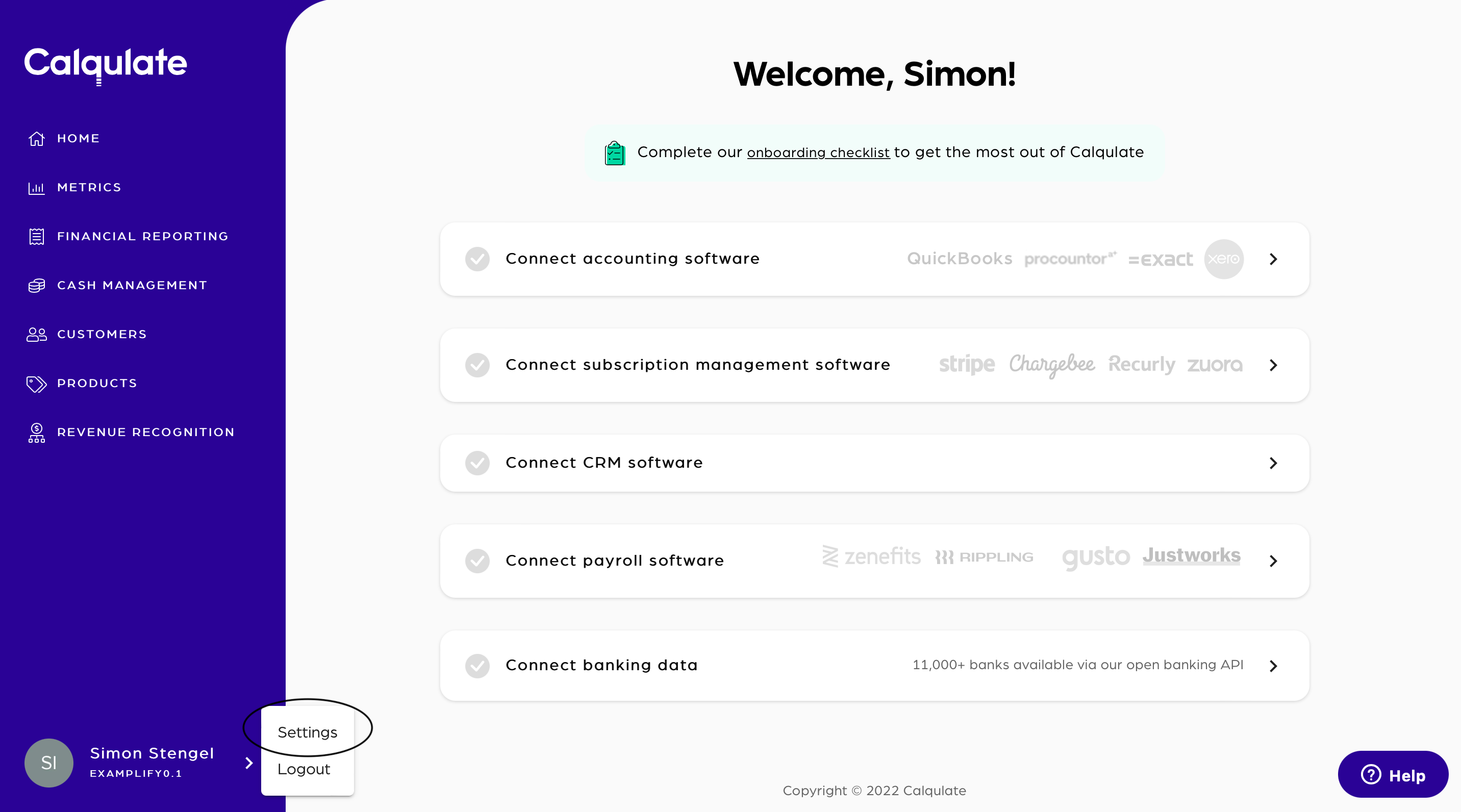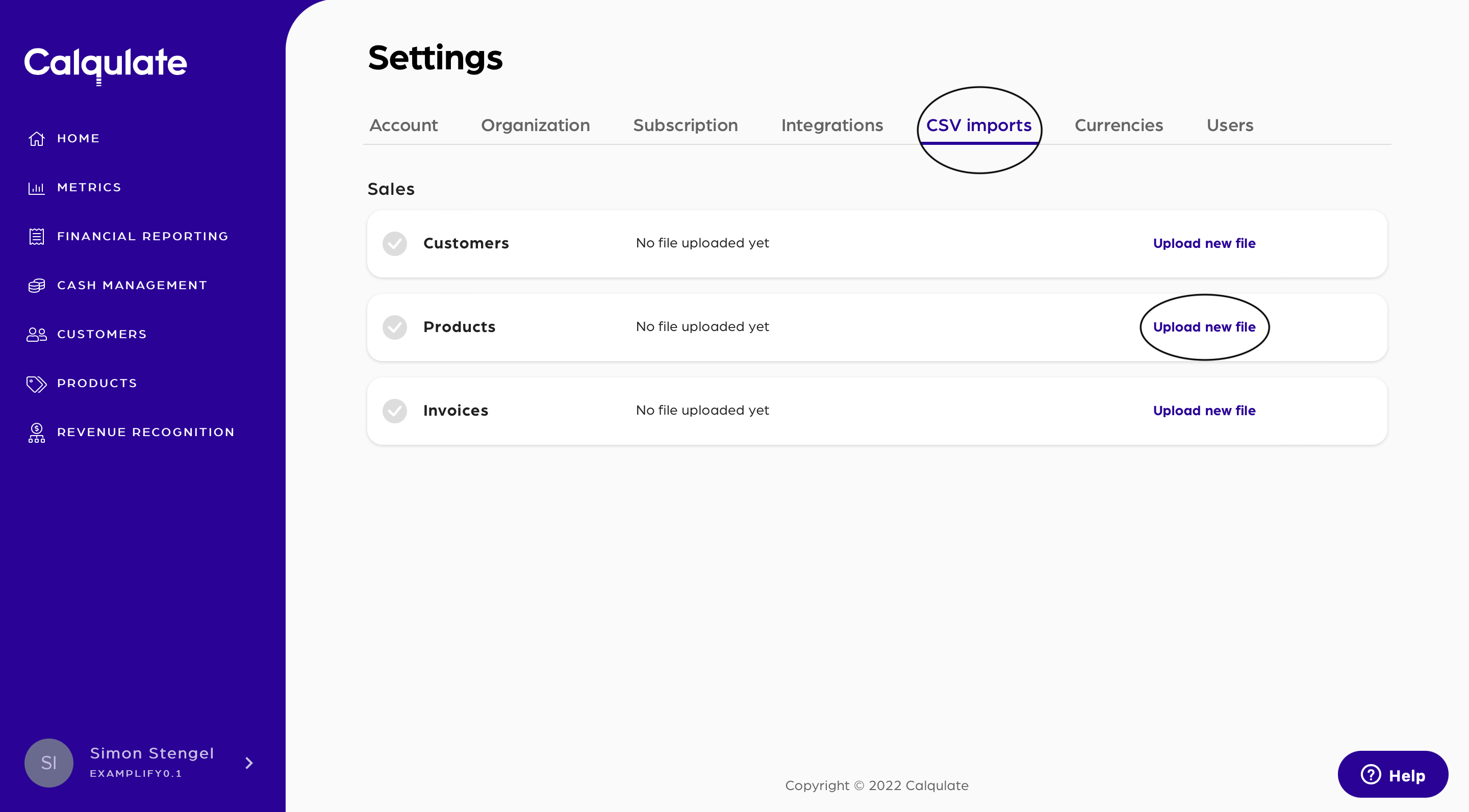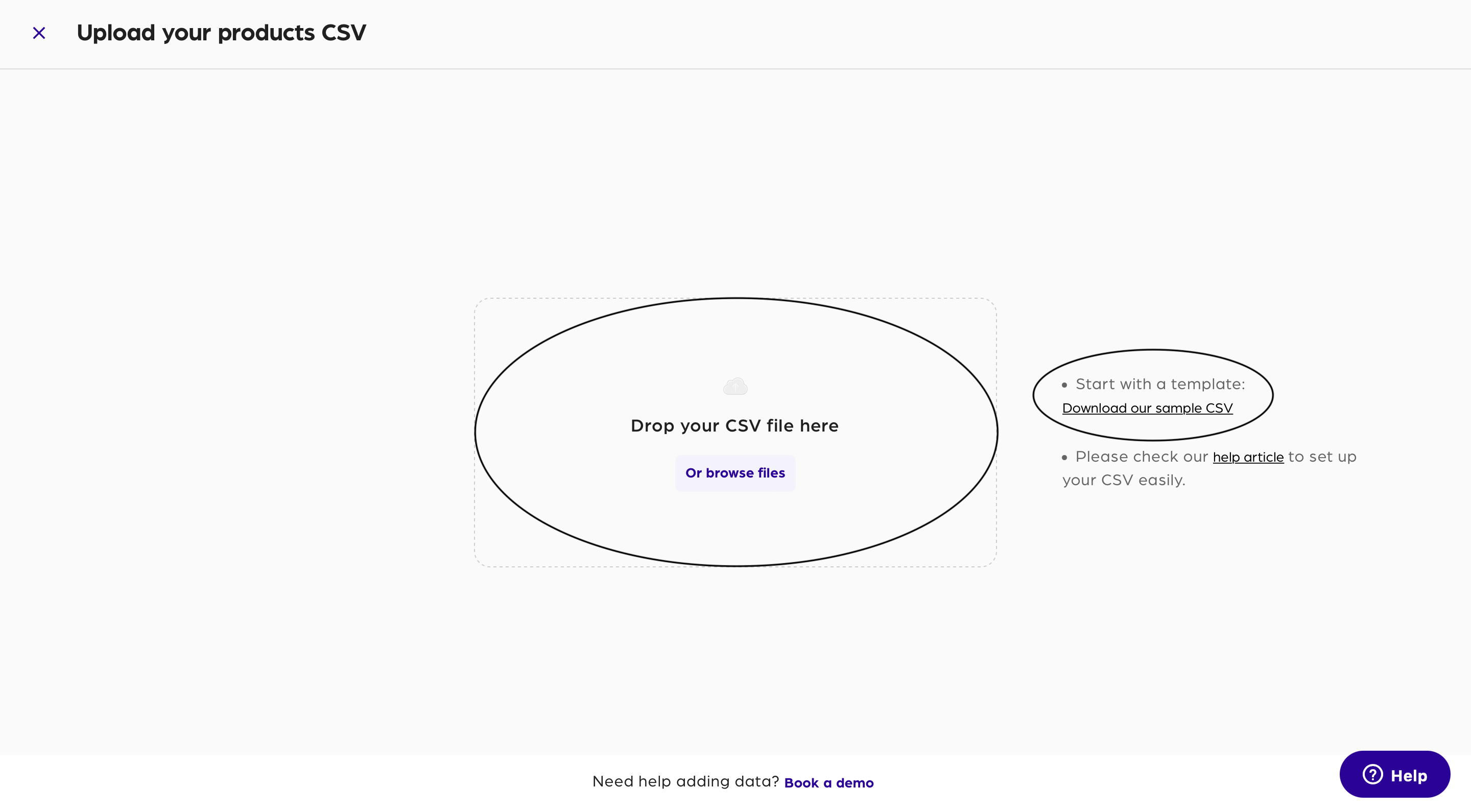Importing Product CSV data
Financial Reporting
Comma Separated Values or CSV files are data sources that can be used to import product data into Calqulate.
Once you upload your data in CSV format, Calqulate will automatically propagate the PRODUCTS menu with the information from your chosen file. This will allow you to enter data directly into Calqulate without having to perform any manual entry.
How to import a product CSV file
To begin navigate to the left-hand menu and click on your account > Settings.

To upload your customer data choose the CSV imports tab first. There you can decide if you want to upload Customers, Products or Invoice data. For uploading Products data click Upload new file in the Products section.

Then go to Download our sample CSV. The template there will make your life much easier. Fill in your product-related data and save the file.
After downloading and filling out the template with your product information, you can upload the file to Calqulate by dropping it into the box in the middle of your screen. Alternatively, you can also browse for the file.

Where to see the data from an imported file
The data from your uploaded file will appear in the left-hand menu PRODUCTS tab.
If you choose to upload an updated CSV file, Calqulate will recognize the data that was already put into the system and update it, even if no changes were made. This will allow you to continuously add and update the CSV file you use without the risk of having repeated data points.
Data requirements
In order to ensure the data is entered correctly, there are some requirements for headings on the CSV files you upload. The following list displays requirements for some data entries:
- creation_date must be in the format YYYY-MM-DD
- price must be listed as numerical value without special characters for; 100 EUR would be 10000, 50 EUR would be 5000
- currency must be listed as 3 alphabetic characters; example: EUR, USD, GBP
- setup_fee must be listed as a numerical value without special characters. For example: 100 EUR would be 10000, 50 EUR would be 5000
- billing_type must be specified as either "one-off" or "recurring", if nothing is entered, the default value is "one-off"
- billing_period must be specified as either "month" or "year". If the billing_type was "one-off", leave blank
- billing_frequency must be a whole number other than 0. The default value is 1. When billing_period is "Month" and billing_frequency is "1" the customer is billed monthly, if it is "Month" and "3" the customer is billed quarterly, with "6" the customer is billed semi-annually. When the billing_period is "year" and the billing_frequency is "1" the customer is billed annually as well as when the billing_period is "month" and the billing_frequency is "12". Even though both options bill the customer annually, the result different. If your unit price is the annual subscription price choose "annual" and "1", if it is on a monthly basis choose "monthly" and "12". If "0" is entered for the billing_frequency, the row is rejected.
- tax_rate must be a number without a % sign. For example: 24% tax is 24
- tax_region must be 2 alphabetic characters representing a country; example: FI, US, UK
- tax_type must be listed either "vat", "sales", or "gst"
- all other headers must be written as text
Updated over 3 years ago
